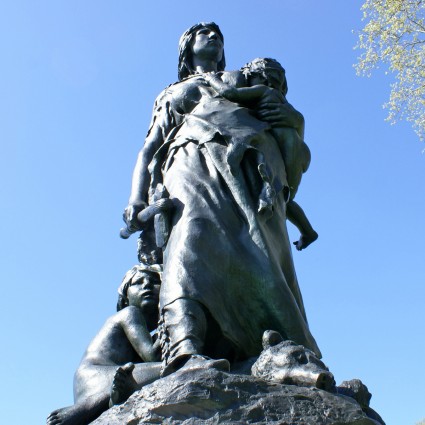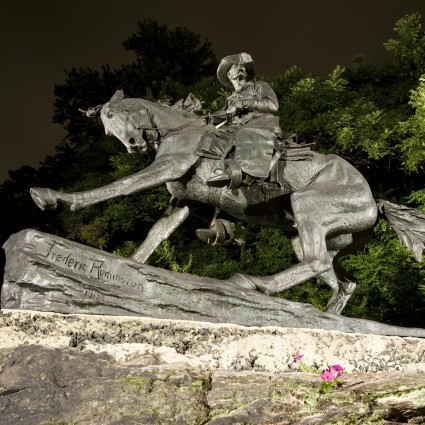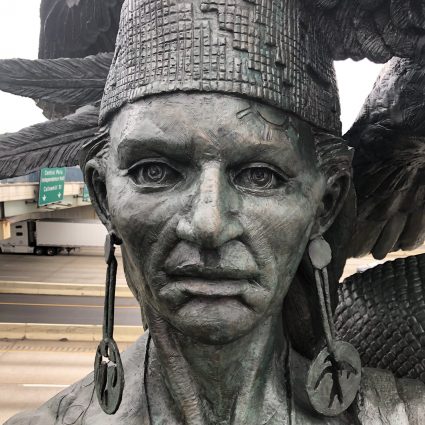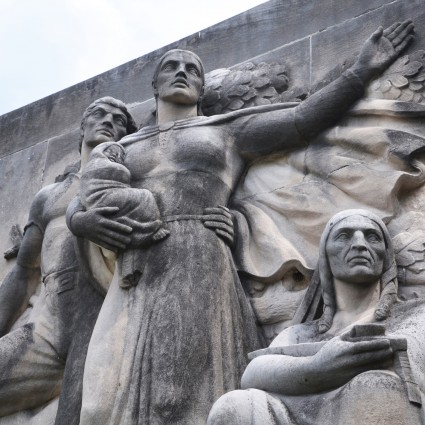At A Glance
The Fairmount Park Art Association (now the Association for Public Art) purchased the sculpture and installed it at a site designated by the artist
Exhibited in the 1899 Salon and the 1900 Paris Exposition, where it received a silver medal
Francis La Flesche, a distinguished Native American spoke at the dedication about the representation of the holy man
The nudity is not without its significance; it typifies the utter helplessness of man, when his strength is contrasted with the power of the Great Spirit, whose power is symbolized by the horns upon the head of the priest.
Considered one of the most important sculptors in American Art, Cyrus Edwin Dallin was born and raised in Utah, where he became well acquainted with Native Americans and pioneers. While the young Dallin was working in one of his father’s mines in Utah, some of the miners discovered a bed of soft white clay, from which he modeled two life-size heads. His work attracted attention and financial support to underwrite his studies in art. Dallin moved to Boston in 1880, opened his own studio, and then sailed for France.
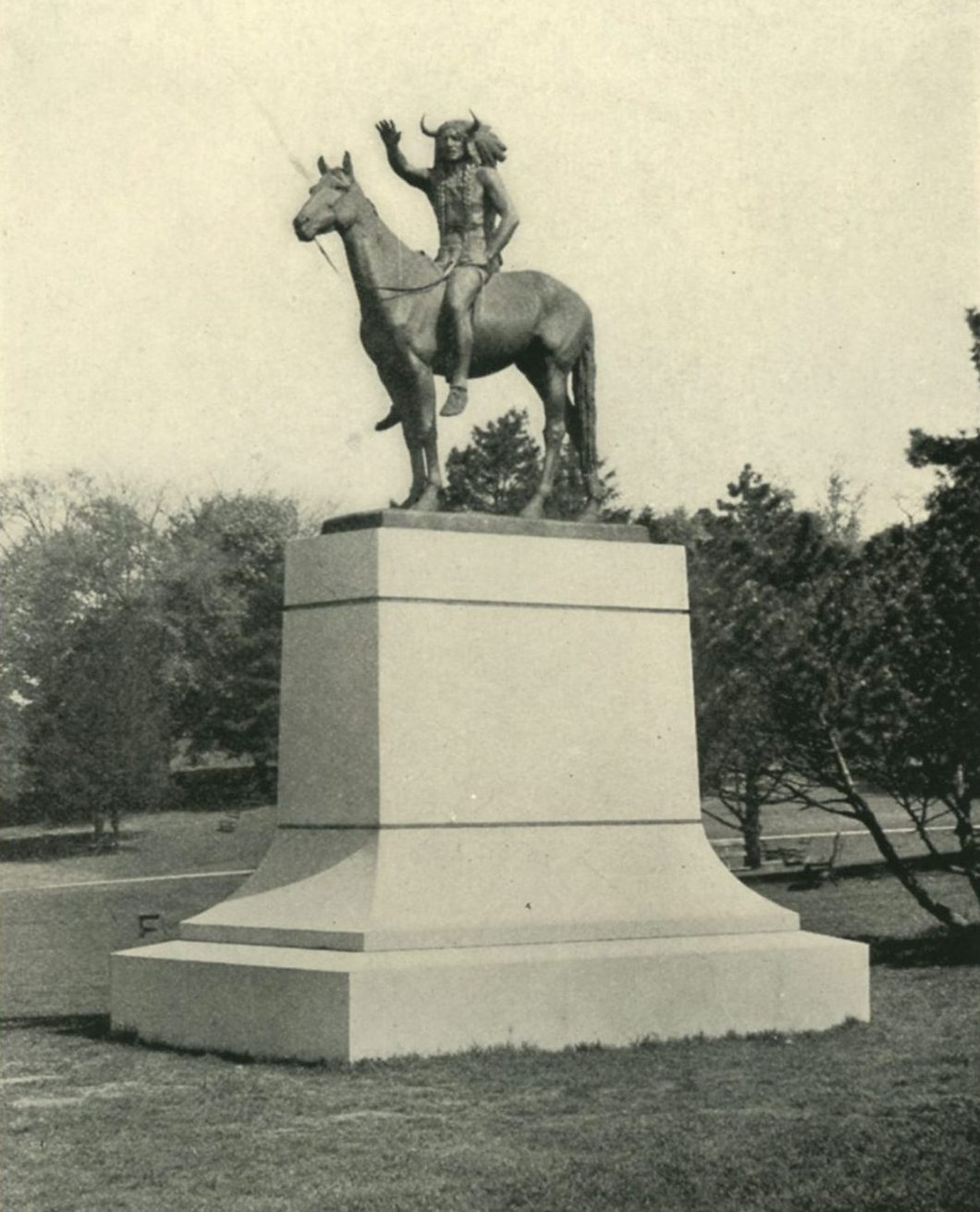
While in Paris, Dallin encountered the touring Buffalo Bill’s Wild West Show and began to produce works that honored Native Americans. The Medicine Man is the second of four Native American equestrians that Dallin executed between 1890-1908, together called The Epic of the Indian. The first sculpture in the series is Signal of Peace, the third is The Protest, and the fourth is Appeal to the Great Spirit, one of Dallin’s most iconic works. In Native American tribes, the medicine man is the spiritual leader who is believed to possess powers that that can heal illness and ward off evil spirits.
The Medicine Man was exhibited in the 1899 Salon and the 1900 Paris Exposition, where it received a silver medal. In Paris, the Austrian government attempted to purchase the sculpture for a park in Vienna, not knowing that it had already been purchased by the Fairmount Park Art Association (now the Association for Public Art) in Philadelphia.
In 1903, the Fairmount Park Art Association installed The Medicine Man in East Fairmount Park at a site designated by Dallin. At the dedication ceremony, Francis La Flesche, a distinguished Native American, spoke about the representation of the holy man: “In many of the religious rites the priest appeared in such a manner. The nudity is not without its significance; it typifies the utter helplessness of man, when his strength is contrasted with the power of the Great Spirit, whose power is symbolized by the horns upon the head of the priest.”
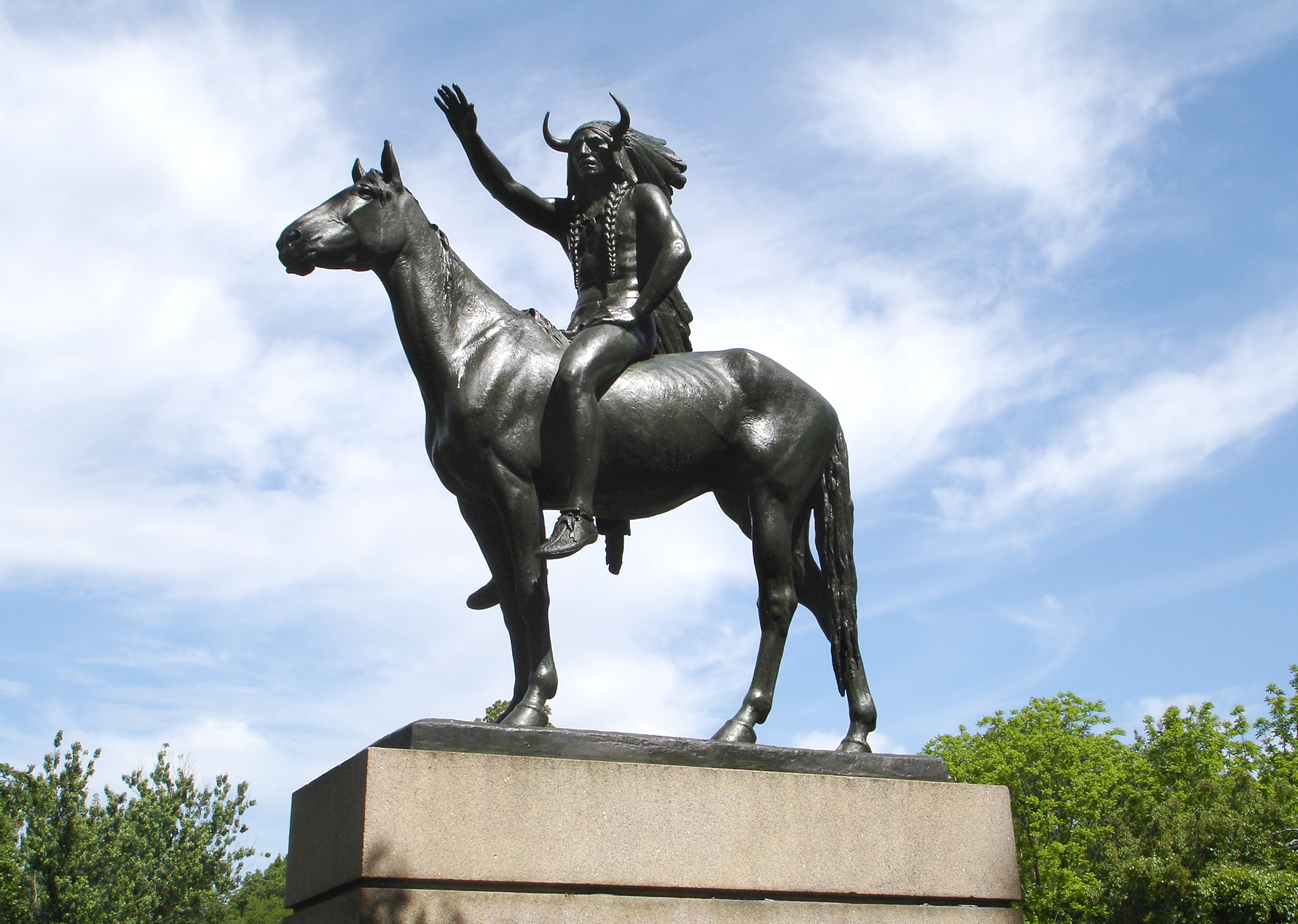
Whether inspired by guilt or reverence for the past, Philadelphians during this period commissioned or acquired three major works to commemorate the spirit of the American West: The Medicine Man, John J. Boyle’s Stone Age in America (1887) and Frederic Remington’s Cowboy (1908), which can all be found in Fairmount Park.
Adapted from Public Art in Philadelphia by Penny Balkin Bach (Temple University Press, Philadelphia, 1992).
RESOURCES:
